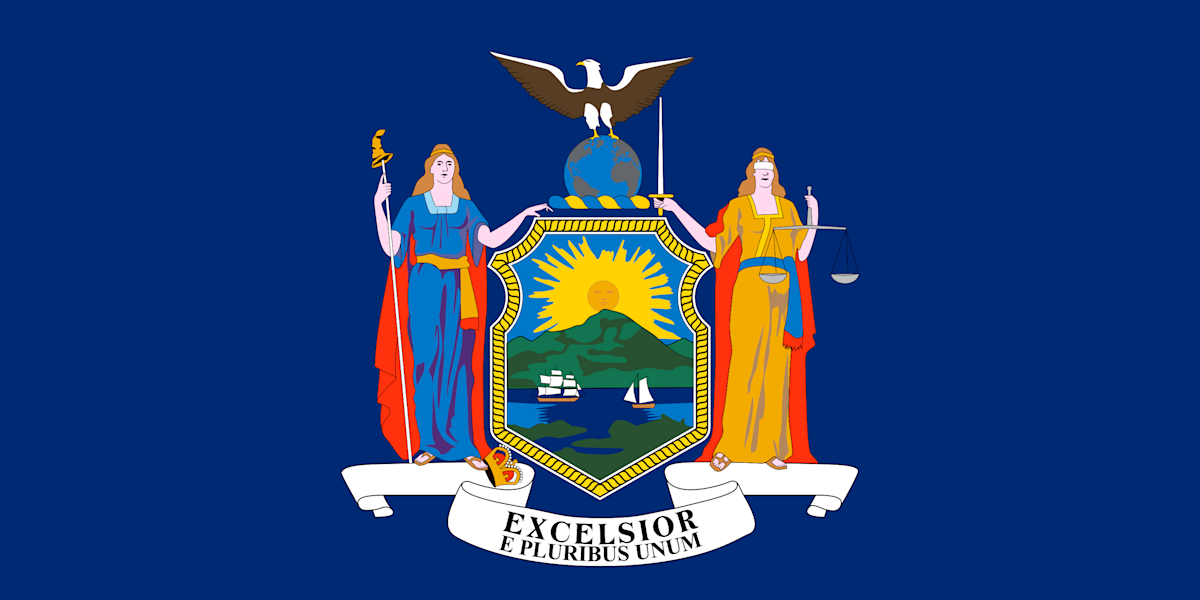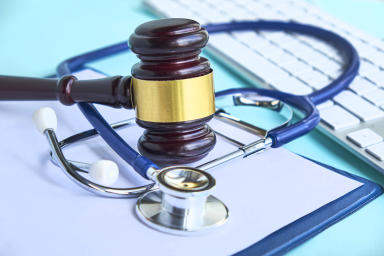New York Medical Malpractice Laws

You likely have several questions if you have been the victim of negligent medical treatment. First, you should determine whether your treatment constitutes malpractice. You will also want to know whether or not a lawsuit would be viable and, if so, who it should name.
This page will give you some information about how New York determines liability in a malpractice claim, how much victims of malpractice stand to earn in a settlement, and how long you have to pursue that settlement. It will also provide resources to learn more about New York’s public health laws and professional licensing regulations.
How Medical Malpractice is Defined in New York
Medical malpractice is a civil charge rather than a criminal offense. Medical malpractice settlements are only available to individuals who can demonstrate that they received negligent medical treatment, suffered an injury, or had an existing condition deteriorate.
New York determines medical negligence based on a locality rule. A medical professional who causes injury or illness by failing to adhere to the standard of care in their local region can face a malpractice suit. However, they are not held to the standards of other regions. A physician at a local practice would likely not be found liable for malpractice if they failed to meet the standard of an internationally-renowned hospital.
Anyone who has suffered from substandard care from a medical professional or facility in New York can file a complaint with the Department of Health.
New York Medical Misconduct Laws
New York’s public health and education laws consider a number of behaviors by a medical professional to constitute misconduct. Misconduct is separate from malpractice as it is handled by the Department of Health and the Office of the Professions rather than by civil litigation. This means that a misconduct charge will not directly result in a settlement for the victim. However, there is a significant overlap in actions that these departments would consider misconduct and that a civil court would consider malpractice, such as repeated instances of negligence or misconduct.
Medical professionals could be charged with misconduct even if they did not harm a patient. For example, administering medical treatment while intoxicated or under the influence of psychoactive drugs is an act of misconduct.
The penalties for misconduct by a medical professional can include the following:
Revocation of their license.
A maximum fine of $10,000 per violation.
Mandatory education courses.
Public service hours.
Someone who believes they have experienced or witnessed professional misconduct by a physician can file a complaint through the Department of Health. If the misconduct was by any other medical professional, file a complaint with the Office of the Professions.
Source: https://www.nysenate.gov/legislation/laws/PBH/230-A
https://codes.findlaw.com/ny/education-law/edn-sect-6530.html
Who Can Be Named in a New York Medical Malpractice Lawsuit
Malpractice can occur in any field of medicine, including surgery, internal medicine, obstetrics and gynecology, oncology, radiology, and several others. While malpractice litigation is often associated with doctors, a plaintiff can name any medical professional in a malpractice suit, including nurses, technicians, EMTs, and pharmacists. As long as the defendant did not demonstrate the level of competence and care standard for other professionals in their specialty, they may owe a settlement.
A plaintiff can even sue a hospital instead of, or in addition to, an individual. If a hospital’s facilities or staff do not meet the legally required standard, its ownership could be named in a malpractice claim. For example, if a patient is unable to receive treatment because an emergency room is without a working X-ray machine, that emergency room is sub-standard. Even if the emergency staff met all expected standards of care, the hospital’s owner was negligent in their maintenance and could be responsible for any resultant damages.
New York Good Samaritan Laws for Doctors
New York provides some protection for doctors who are accused of malpractice in an emergency scenario. An off-duty doctor who provides medical help at the scene of an accident cannot be held responsible for any harm they caused to the injured person, whether by taking or failing to take certain actions.
For example, an off-duty physician might notice a car accident on the side of the road and pull over to assist. When performing CPR on an unconscious victim, they may accidentally use too much force and fracture a rib. A civil court would likely relieve this doctor of liability under the Good Samaritan law.
The Good Samaritan law does not protect doctors who, acting outside their professional course of duty in an emergency situation, injure someone due to gross negligence. A doctor who intervenes at the scene of an accident and injures the victim by performing an obviously unnecessary procedure might be liable for damages.
Practicing Medicine Without a License in New York
In addition to the usual civil penalties for malpractice and personal injury, someone who misrepresents themselves as a doctor in New York will be subject to a charge of unauthorized practice of a profession. This includes representing oneself as a “physician” without a professional medical license. This offense is a Class E felony, which can lead to a prison sentence of up to four years.
If you have received medical treatment from someone misrepresenting themselves as a doctor, you can report them to the police or file a complaint with the Attorney General.
New York Comparative Fault Law
Civil settlements in New York, including malpractice settlements, are determined based on comparative negligence, also known as comparative fault. Under a comparative negligence clause, a plaintiff can recover damages even if they are partially responsible for their injuries or losses. While most states’ comparative negligence clauses are “modified,” meaning a plaintiff cannot recover damages if they share the majority of fault, New York’s is “pure.” Under pure comparative negligence, a plaintiff primarily responsible for their own injuries can still recover damages from another party with partial responsibility.
According to comparative negligence, a patient who does not inform a doctor about their medical history and whose conditions result in worsening might find their settlement altered. While a non-negligent physician would have given them a more accurate diagnosis, the patient is partially responsible for that incorrect diagnosis. If a court found that the plaintiff was 40% responsible for their injuries, their settlement would be reduced by 40%.
New York Informed Consent Law
A physician must obtain informed consent from a patient before performing any medical procedure or administering any medical treatment. This means that a patient must be fully aware of the treatment, why the physician intends to administer it, and its potential beneficial and adverse effects. If other treatments could have a similar outcome, the patient should be made aware of them.
Administering medical treatment to a patient without informed consent violates New York’s public health law. A physician who does so is more likely to be found liable for damages in a malpractice lawsuit, and a hospital that allows its on-duty staff to do so could have its operating certificate revoked.
The informed consent law does not apply when a physician has to perform an emergency procedure on a patient. A patient who could die or suffer a serious injury without immediate medical treatment may not be able to provide consent to that treatment. A physician who fails to administer emergency treatment, even without informed consent, would violate the Hippocratic Oath and could be held responsible for malpractice.
Source: https://regs.health.ny.gov/content/section-4057-patients-rights
New York Medical Malpractice Liability Insurance Requirements
There are no state laws requiring medical professionals in New York to subscribe to liability insurance. However, most hospitals require their doctors to be insured. Medical colleges often require their students to have malpractice insurance and sometimes include it in their tuition costs. No laws require nurses, EMTs, radiation technologists, or other medical professionals to carry liability insurance. However, their employers may require it.
Many medical liability insurers in New York provide coverage for $1.3 million per occurrence of malpractice and $3.9 million in aggregate. A physician who pays for that amount of coverage from a New York-based insurer may be eligible for the state’s Section 18 Excess Liability Program, which provides subscribers with additional coverage of $1 million per occurrence and $3 million in aggregate.
How Much Can Someone Sue For Medical Malpractice in New York?
Many states limit the amount of damages that a plaintiff can receive from a lawsuit, especially for malpractice. New York is one of only 15 states that does not cap medical malpractice damages.
A plaintiff suing for malpractice in New York can receive a settlement that compensates for both the economic and noneconomic losses that they experienced as a result of their negligent treatment. Economic damages may account for the cost of future medical treatment to address the plaintiff’s injuries or conditions that were caused or worsened by malpractice. They could also include lost or diminished ability to earn wages. Noneconomic damages typically include compensation for physical and emotional pain and suffering.
Particularly egregious instances of medical malpractice may warrant punitive damages. Also known as non-compensatory damages, these payments are not intended to reimburse the plaintiff but to penalize the defendant for malice or gross negligence. A physician who intentionally harms a patient may owe punitive damages on top of compensatory damages. New York does not place a limit on punitive damages.
What Is the Statute of Limitations in New York for Medical Malpractice?
New York’s statute of limitations for medical malpractice is two years and six months. Most instances of malpractice do not abide by a discovery clause, meaning that the victim has thirty months from the date of the malpractice, rather than the date that they discovered the malpractice, to sue.
There are two exceptions to the statute of limitations. First, someone who finds a foreign object, such as a surgical implement, in their body as a result of a medical procedure has one year from the date of discovery to file charges. Second, someone whose physician failed to detect cancer due to negligence has two years and six months from the date of discovery, rather than the date of offense, to sue.
Keep in mind that the statute of limitations determines how long you have to sue for malpractice and that lawsuits are usually preceded by a claim. If you wait until the end of the statute of limitations to begin the process of filing a claim, you risk your lawsuit being dismissed.
Legal Resources for Medical Malpractice Victims in New York
If you are considering a medical malpractice lawsuit, it will help you to have an official record of your complaints and some knowledge of how New York regulates the practice of medicine. The following resources will let you file your complaint against a physician or another medical professional and arm yourself with knowledge about the standards that New York medical practitioners are legally required to meet.
New York State Department of Health
New York’s Department of Health manages accreditation and certification for healthcare providers within the state. Any healthcare professional or facility that violates public health law can lose their accreditation. If you wonder whether the medical treatment you received constituted a violation of any of those laws, you can find the legal text on the Department of Health’s website. You can also read up on the Patients’ Bill of Rights to learn about your rights as someone seeking medical treatment in New York.
The Department of Health also maintains a database of physicians who have previously been disciplined. Users can find descriptions of a doctor’s past misconduct and subsequent penalties.
As mentioned above, someone who has experienced medical malpractice in New York can file a complaint through the Department of Health’s website.
Visit: https://apps.health.ny.gov/pubdoh/professionals/doctors/conduct/factions/Home.action
New York State Education Department—Office of the Professions
The Education Department’s Office of the Professions is in charge of professional licensing within the state, including for physicians. Their website includes information for consumers on the state’s requirements for medical licensing.
If you think you were the victim of someone misrepresenting themselves as a physician, you can look up the status of their license on the OP’s website. The website also gives users access to the laws defining professional misconduct and provides the option to report misconduct.
Visit: https://www.op.nysed.gov/professions/physicians/consumer-information-physicians
Expertise.com StaffAuthor
Step into the world of Expertise.com, your go-to hub for credible insights. We don't take accuracy lightly around here. Our squad of expert reviewers, each a maestro in their field, has given the green light to every single article you'll find. From rigorous fact-checking to meticulous evaluations of service providers, we've got it all covered. So feel free to dive in and explore. The information you'll uncover has been stamped with the seal of approval by our top-notch experts.




